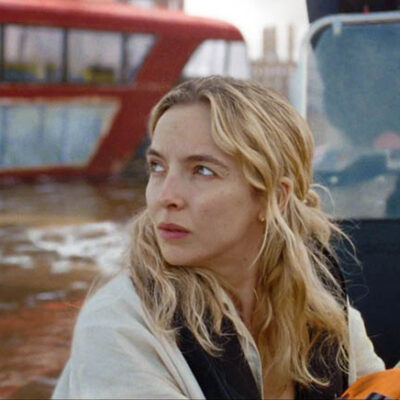Re-creating (and creating) the environment
Knowing that what is typically filmed in digital backlot shots is just a placeholder for the real thing, Barnstorm had to ensure that they had accurate measurements of the shot sets, and similarly accurate surveys of the environment, vehicle or place they were creating digitally.
“For the helicopter scene,” notes Deming, “we had measurements. We knew how high it was off the ground. We knew the height of the lip of the opening. We knew the size of the opening. There’s a moment there where the actor puts his hand on the side of the door as he’s getting out of the helicopter. We made sure that we had an opening in the green box that had been built that was just the right size that he could actually do that, and his hand then would be physically touching the digital helicopter that we built.”
The New York City street shot had the challenge of taking plate photography that did not have tall buildings in it (which impact the plate lighting) and re-creating the scene appropriately. “Obviously, there’s only so much you can do about that,” says Deming, “but we shot intentionally in overcast lighting to the best that we could and then we try to match.”
To get the look of a New York City that has actually been ‘re-worked’ a little by the Nazis, Barnstorm referenced old imagery of the city landscape, but then would add in construction cranes and more brutalist architecture.
An important step, too, was making sure anything the studio added digitally did match to any physical components that were crafted by the show’s art department – “items like telephone booths,” identifies Deming. “The art department built telephone booths and fire hydrants and various sorts of street furniture for New York for the scenes. So we made digital versions of all those things as well.
“And then,” adds Deming, “we just went crazy on details, details on everything. Lane markings for traffic, signage on the sides of the streets. We created all sorts of things, down to – and I don’t think anybody sees it – but there’s discarded cigarettes, cigarette wrappers and stuff like that in the gutter. Not too many, because it’s a fascist state and they would fine you at the very least for that! But all those kinds of details we sort of peppered in there.”












